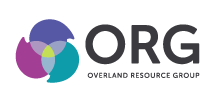A Structure for Working Together – The National Quality of Work Center is Conceived
This is the second installment of a six-part Overland Resource Group blog series “Collaboration & Employee Engagement: Ideas Whose Time Have Come, Again”. Previously, in Part 1 we chronicled the very beginnings of the journey of employee engagement from its roots in the 1960s and 1970s. Next, creative new ideas for a new dynamic and structure in workplace relationships are envisioned.
One interesting initiative taken in light of the focus on employees, the environments in which they worked and the theories about motivation was the creation in 1974 of what came to be called the National Quality of Work Center (NQWC) in Washington, D.C.
A gentleman named Ted Mills,with funding in the form of grants from the U.S. Department of Commerce and the Ford Foundation, created NQWC as a not-for-profit entity.
The mission of NWQC was to bring corporate management and the unions representing the workforces together to experiment with changing the nature and structure of the work environment and perhaps the very design of the jobs being performed.
The scope was potentially a seismic change in organizational culture.
Mills had been an Executive Producer in the News Division of NBC, where he became interested in “quality of work life” issues, “blue collar blues”, and related concerns. He wrote an article for the Harvard Business Review in 1976 titled “Human Resources: Why the New Concern?” raising a question which put the emphasis on the term “resources” in “human resources.”
As the tag-line popular at the time had it, “people are our most important product.” Mills noted that in fact the nature of America’s corporate structures and cultures, very much “command-and-demand, top-down” environments, would seem to belie that notion.
He started exploring what might happen if organized labor and management could join forces to make culture change happen in America’s large manufacturing (and other) environments.
A unique dimension of Mill’s approach was the potential joining of organized labor and management in these efforts at creating significant organizational change, with gains in both productivity and quality of work life.
The argument was that both labor and management had everything to gain and nothing to lose in such joint initiatives. If the untapped employee resource was brought to bear, productivity and thus the bottom line would benefit, as would the employees themselves who would now be in position to influence how the work was designed and performed.
If McGregor’s Theory Y (see Part 1) was correct, there would be a significant improvement in the quality of working life, a minimizing or elimination of “blue collar blues,” and an intrinsically motivated workforce. After all, the workers were both company employees and also union members – and what was good for the members would be good for the union.
Additionally, and perhaps more importantly, if the union had a say in the establishment and direction of such “employee involvement” initiatives, the attempt at organizational change would not be viewed by organized labor with suspicion.
Having union involvement increased initiative credibility. This reduced suspicion that the involvement initiative was another management “game” to influence employees, who were union members, perhaps at the expense of the well-established collective bargaining processes and structures, and the all-important contract governing wages, benefits and working conditions.
The National Quality of Work Center (NQWC) was established in the mid-1970s, with the mission to find both companies and unions willing to engage in experimental joint “pilot projects.”
Next: NQWC - The Early Experiments
Robert Hughes is the founder and President of Overland Resource Group and can be reached at r.hughes@orginc.com.
Nicholas Bizony is long time member of the consulting consortium at Overland and is a founding Principal with The Lakeland Group, where he consults to major organizations in the public and private sectors, enabling them to achieve significant improvements in productivity and quality, cost reduction, and increased customer satisfaction. Nick can be reached at n.bizony@orginc.com.



